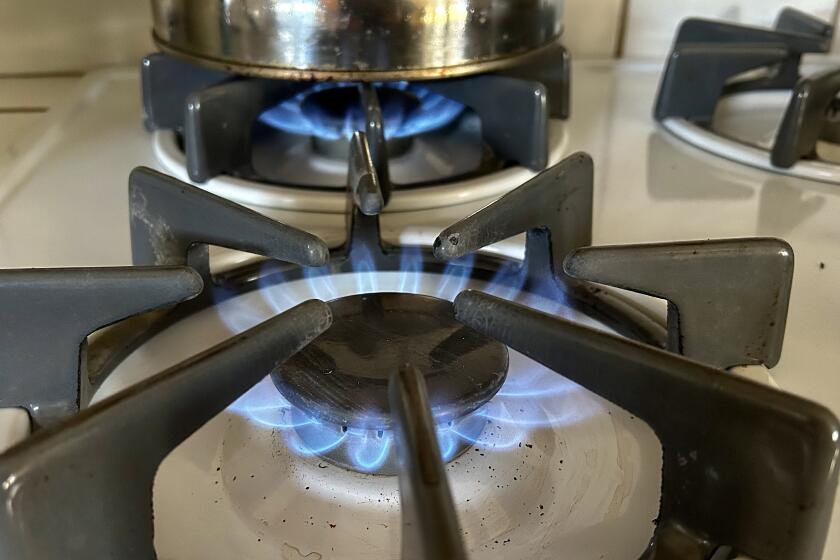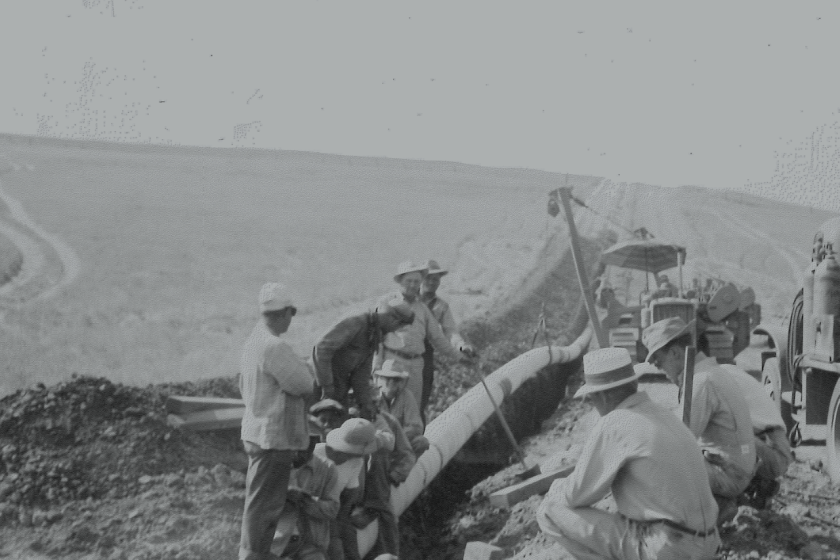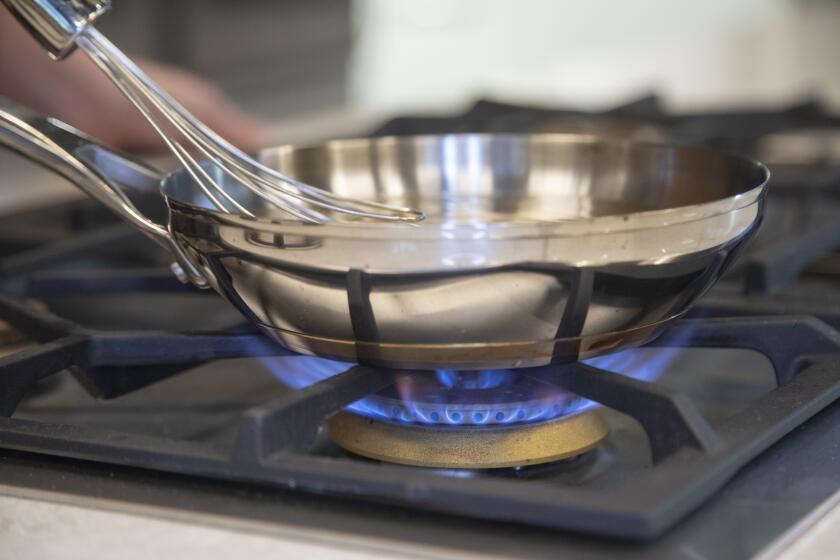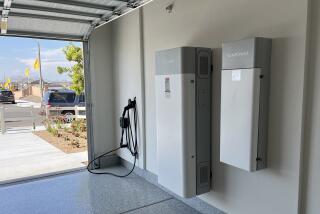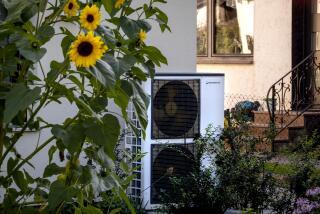Ready to switch from gas to electric appliances? Here’s how
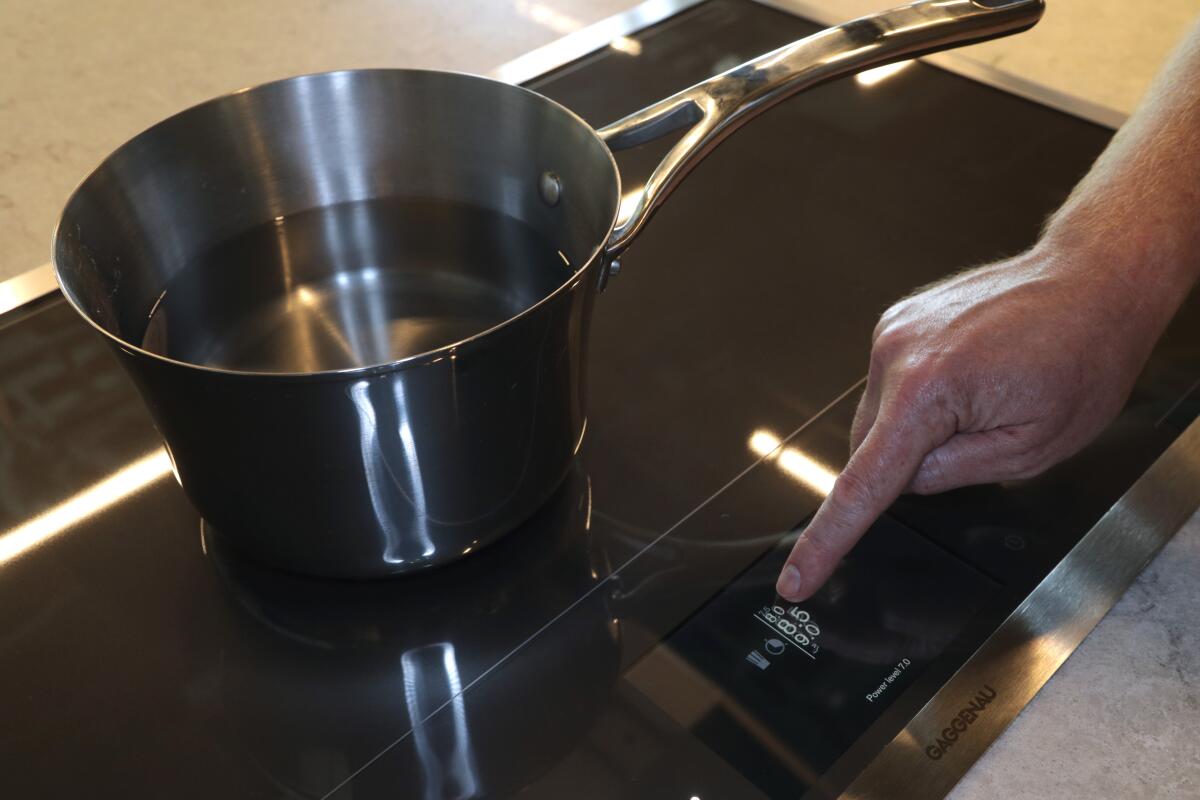
By rejecting Berkeley’s ban on natural gas lines in new buildings, a federal appeals court has thrown into doubt dozens of similar prohibitions across California, including in Los Angeles. But what does it mean for you?
The ruling won’t stop gas appliances from polluting homes and emitting greenhouse gases. And the sort of ordinance at issue applied only to new construction, not the gas appliances already in homes.
So the 9th Circuit Court of Appeals’ decision doesn’t have any bearing on current California homeowners considering a switch to electric appliances. Nor is it going to stop developers from building natural-gas-free homes, given that there is demand for them — witness the all-electric developments popping up around Southern California.
There are still health and climate reasons to take the leap, along with subsidies to trim the cost. Yet there are other considerations that may keep you wedded to natural gas, at least for now.
Here’s a guide to what’s involved in switching away from natural gas in your home, including the financial incentives offered by utilities and government agencies.
A three-judge panel sided with the California Restaurant Assn. against a Berkeley policy that ‘prohibits the installation of natural gas piping within newly constructed buildings.’
Which appliances use natural gas?
The appliances most likely to be powered by gas in your home are the furnace or wall-mounted heater, water heater, clothes dryer, oven and cooktop. Other possibilities include pool heaters, fireplaces, outdoor lights and outdoor grills.
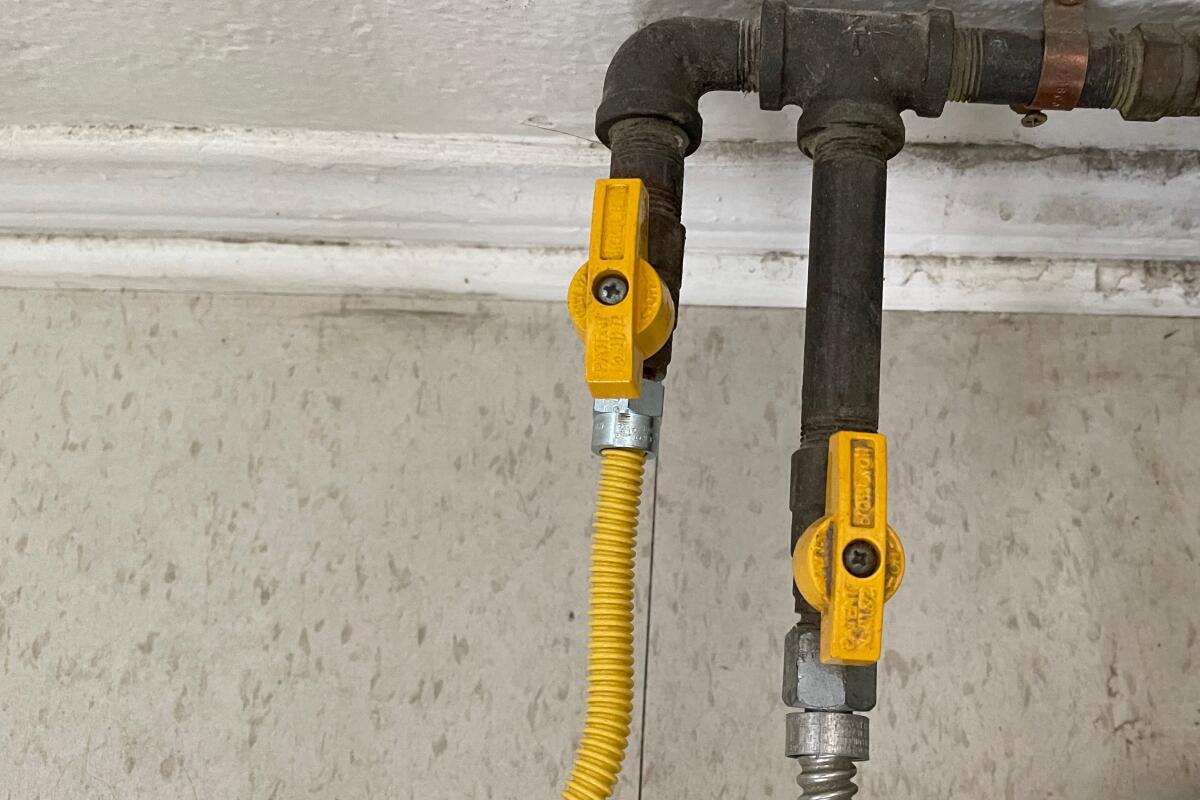
To tell whether your appliances are gas or electric, it’s not enough to look for a cord plugged into the wall — even gas-powered units may still require some electricity. Instead, you’ll need to see if the appliance is connected to a gas pipe, typically made of corrugated metal and equipped with a shut-off valve that is often yellow. Or you can look up the specifications for your appliance on the manufacturer’s website.
What are the environmental and health risks?
Appliances that burn natural gas emit carbon dioxide, methane, nitrogen oxides and other greenhouse gases. But in the big scheme of things, home natural gas use is not a leading contributor to climate change. Homes accounted for 6% of the greenhouse gas emissions in 2020, according to the Center for Climate and Energy Solutions, although other estimates put the residential share closer to 20%.
Within the home, the big dogs in terms of carbon emissions are the furnace and the water heater, which account for two-thirds of a home’s energy use. A gas stove and cooktop are more parsimonious, accounting for only 7% of home energy consumption.
But cooking appliances can create hazardous byproducts when they burn gas, including carbon monoxide and formaldehyde, that are especially risky if they are not vented. Those byproducts have been correlated with childhood asthma, but research looking for a direct link has been inconclusive. Worse, a study published last year found that gas stoves routinely leaked benzene and other harmful gases even when no one was using them.
Bob Hope, along with Daffy Duck and Marlene Dietrich, helped popularize the catchphrase ‘Now you’re cooking with gas.’ Many decades later, we’re paying out the nose for the privilege.
Don’t electric appliances contribute to climate change?
They do, because electricity-generating utilities still rely on fossil fuels to produce power. In California, about 40% of the electricity generated in the state comes from power plants that burn natural gas. So if you’re going to swap out appliances, it’s important to make sure you’re buying electric ones that use power efficiently.
And in the case of clothes dryers, switching from gas to electric could increase your energy use significantly. Gas dryers dry clothes roughly twice as fast as conventional electric dryers, according to Home Depot, making them much more energy efficient.
On the other hand, replacing your gas furnace with an electric heat pump will slash your energy use and emissions. A 2020 study by UC Davis found that, on average, CO2 emissions from heat pumps were 37% to 53% lower than from gas furnaces. “The impact of fugitive emissions from the furnace is significantly higher than that of the heat pump,” the study said, adding that the greenhouse gas reductions would be seen “under a wide range of geographic and climatic conditions.”
(And if you really wanted to cut your power bill and carbon footprint, you could install solar panels on your roof and a storage battery in your garage. But that’s a whole ‘nother project with a unique set of benefits and trade-offs.)
Los Angeles has grappled with gas stoves, green hydrogen and a major methane leak. Here are some lessons for the nation.
What’s a heat pump?
It’s a machine that draws warmth or coolness from the environment — the air in most cases, but some higher-end models pull from the ground. It can then send heating or cooling air through your home, either through existing ducts or through wall units (“mini-splits”).
Early versions of the technology didn’t work in cold climates, and heat pumps are still not a good option in the coldest parts of the country. Another shortcoming, according to Consumer Reports, is that heat pumps are not well suited for poorly insulated homes, a description that applies to many Southern California houses.
“Heat pumps heat more gently than other systems — it’s a constant trickle of warm air, rather than blasts of heat every few hours,” Consumer Reports explained. “If you have poor insulation, you’ll notice drafts and cold spots more often than you would with the higher temps of a traditional system.”
A heat pump can also be used to power a hot water heater. You can get a water heater with a dedicated heat pump, or you can add a water tank to an existing heat pump system.
The technology has also been incorporated into higher-end clothes dryers. Heat pump clothes dryers push warm air through the spinning tub of clothes to absorb some of the moisture, then pump the air through a condenser to remove the moisture so that it can be cycled back through the clothes. The technique requires significantly less energy to heat the air, making these models far more efficient than conventional electric dryers.
Around 38.5 million California residents live in a county that received a failing grade in the Lung Assn.’s annual “State of the Air” report.
Can I just unplug a gas appliance and plug in an electric one?
Nope. It’s a much bigger job than that.
Although you’ll have no trouble finding electric heaters, dryers and stoves to fit into the spaces now occupied by your gas appliances, your house’s electrical panel, wiring and outlets may not be ready for the additional demand for current. That’s especially true if you have an older house with a 100-amp electrical panel, which has half the capacity of a contemporary home’s panel.
If you do require a new electrical panel, that could add well over $1,000 to your costs, according to the Angi website. You’ll probably need a permit from your local government to do the work too.
You will also need higher-voltage wiring, circuits and outlets to install a heat pump and to switch your dryer, stove and cooktop from gas to electric. These appliances typically need a 220- to 240-volt circuit, and they don’t plug into the standard three-prong outlet. (Some new manufacturers, including Channing Street Copper Co. in the San Francisco Bay Area, are addressing these issues, but the products are not yet widely available.)
One way to reduce the need for new electrical capacity is to plug the leaks in your drafty home by sealing cracks, weatherstripping windows and doors, and adding insulation. According to the advocacy group Efficiency First California, “A very high-performing, average-sized home (1,800-2,000 square feet) can be heated or cooled with 1,500 watts of power — about what a hairdryer or toaster uses!”
Our tests show the switch from gas cooking to an induction stove may be easier than you think.
Aren’t gas stovetops better for cooks?
That might have been true in the days when electric cooktops relied on coils that couldn’t raise or lower their temperatures quickly like a gas flame. Now, however, there are electric cooktops that use induction to give you far more precise control over the heat you’re applying, while also being better for health and safety than other electric or gas ranges. (Induction uses an electromagnetic field below the glass surface of the cooktop to heat the iron in the pot directly above it.)
These appliances are more energy efficient than other stovetops, although they can be costlier to operate when electric rates are higher than gas rates. But they’re also more expensive — prices for a name-brand four-burner version start at $600 and increase rapidly after that — and they work only with flat-bottom pans that a magnet can stick to.
And as noted above, you’ll probably need to do some rewiring to switch from gas to electric. “Most kitchens that are set up for gas cooking don’t have the right connection for an electric range — you can’t just plug it into a regular wall outlet,” Consumer Reports observes. “An electrician will need to set up a high-amperage circuit (40 or 50 amps, 240 volts) connected to a four-prong outlet, using a very thick wire that can safely handle the amount of energy that a range will need.”

How much will the new appliances cost?
The biggest hit to your bank account will come from an electric heat pump. The cost will depend on how big a unit you need, which in turn depends on how large and well-insulated your home is. The Angi website reports that most L.A. homeowners spend between $3,000 and $8,000 for a unit that draws heat and cooling from the air; installing a geothermal unit can cost $20,000 or more.
Plenty of name-brand electric stoves are available for $500 to $700, but adding an induction cooktop will drive the price over $1,000. And although name-brand conventional electric clothes dryers start at around $500, most sell in the $900-to-$1,200 range, which is also the starting price range for heat pump dryers.
That’s just the cost to buy the appliances. Because electric rates are typically higher than gas rates, you can expect higher bills for the energy used to cook and do the laundry if you replace your gas dryer, stove and cooktop with electric ones. A heat pump, on the other hand, should reduce the cost of heating and cooling your home.
Many federal incentives for heat pumps, induction stoves and other green technology can’t be issued until states design their distribution systems.
Are there rebates for electric appliances?
Yes, although they are limited at the moment.
California’s Golden State Rebates program offers $500 for an electric heat-pump water heater to replace a gas-powered one.
Some local utilities offer their own rebates for qualified high-efficiency electric appliances; for example, to encourage customers to buy heat pumps, the Los Angeles Department of Water and Power offers a rebate of $100 per ton and Glendale Water and Power offers $150 to $170 per ton. Glendale also offers $200 to $220 for a heat pump dryer, $400 to $450 for an electric water heater, and $200 to $220 for an electric range or oven.
The federal government has allocated about $290 million to California to help low- and moderate-income families purchase energy efficient appliances. That money isn’t expected to be available to states until this summer, though, because the feds are still working on the details. Then California will have to develop its own rules for distributing the money, which could delay the rebates further.
According to the California Energy Commission, the federal rebates will be available only to households with incomes below 150% of the area median income; in Los Angeles, that translates to roughly $137,000. And only projects that are certified as efficient by Energy Star qualify for rebates. The most you can receive from the program, the commission says, is $14,000.
According to the U.S. Department of Energy, the rebates will include up to $8,000 for an electric heat pump for space heating and cooling, up to $1,750 for a heat-pump water heater, up to $840 for a heat pump clothes dryer, and up to $840 for an electric stove, cooktop, range or oven. The program will also offer up to $4,000 to upgrade an electric panel and up to $2,500 to upgrade wiring.
In addition, the feds offer a 30% tax credit for a number of these purchases. The maximum credit is $2,000 for a central heat pump or heat pump water heater and $600 for a panel upgrade.
Chinese and Korean chefs in Los Angeles are worried that a ban on future gas stoves may alter their kitchens forever.
About The Times Utility Journalism Team
This article is from The Times’ Utility Journalism Team. Our mission is to be essential to the lives of Southern Californians by publishing information that solves problems, answers questions and helps with decision making. We serve audiences in and around Los Angeles — including current Times subscribers and diverse communities that haven’t historically had their needs met by our coverage.
How can we be useful to you and your community? Email utility (at) latimes.com or one of our journalists: Jon Healey, Ada Tseng, Jessica Roy and Karen Garcia.
